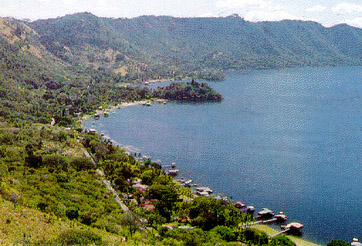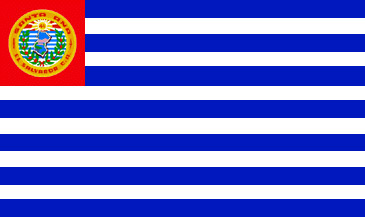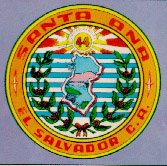|
![]()
Santa Ana: "The Heroic" by Liggia (age 14)
Santa Ana was given its name by the bishop Brother Bernardino Villalpando. Before, its name was Cihuatehuacán: "Ciudad de Sacerdotisas" ("City of Priestesses"). Jose de Bustamante y Guerra, Captain of the Guatemala Kingdom, got the title of "Villa" (small town) for Santa Ana la Grande ( Santa Ana the Great ) on July 1812. In 1824, the Asamblea Nacional Constituyente de las Provincias de Centro America, gave the title of "City" to the Villa de Santa Ana. On May 22 of the same year, by an Executive Order, the city was declared the capital of the province of Sonsonate. Twenty years later the province of Santa Ana was created, giving the capital and the province the same name. On May 1894, Santa Ana was the scenery where was performed La gesta de los 44. It was about 44 Salvadorians who were really angry about the tyranny of the brothers Ezeta, so they took over the headquarters of Santa Ana and put up a fight in which the Ezeta brothers lost. For that heroism, Santa Ana is called " Ciudad Heroica" ("Heroic City"). Facts in brief
about Santa Ana
Nowadays Santa Ana has three districts: Santa Ana: is divided into cities: Santa Ana (departmento capital), Coatepeque and Texistepeque, and villa El Congo. Chalchuapa: is divided in one city of the same name, one villa that is Candelaria de la Frontera and two towns: El Porvenir and San Sebastian Salitrillo. Metapán: Is divided a city of the same name, and four towns: Masahuat, Santa Rosa Guachipilin, San Antonio Pajonal and Santiago de la Frontera. Santa Ana Cathedral The most famous cathedral in El Salvador was begun in 1905 in a neo-gothic style. The imposing white facade is currently undergoing restoration; inside are three naves decorated with images dating back to the 16th century. A high ceiling and worn wooden floor leads to a while altar. The pink and gray columns look like marble, but they are actually painted concrete. Santa Ana is a city that has open streets and a lavish National theater. Sharp green hills surround the city, with the cones of Cerro Verde and Izalco and Santa Ana volcano further to the south. It is still a coffee town, surrounded by many plantations where workers till the rich volcanic soil. Santa Ana has retained more of its colonial heritage than most cities this size, and it is therefore more pleasant than the country's choking capital. Wide, clean streets pass between old buildings in surprising good condition, most are under two stories high and painted in pastel colors. The low buildings leave lots of blue sky that gives the city a spacious feel. Local artisans are famous for their leather goods, they are also famous for their clay figures, candies made of papaya, fig, tamarind, milk, nance (a small yellow fruit), and many other fruits. Photos courtesy of www.abest.com/. Flags courtesy of www.crwflags.com/. Source: Geografia Visualizada by Miguel Angel Chinchilla, Editorial Piedra Santa, SEGUNDA EDICION:1996. |
More information: |
||||||||||
| Explore More: Country: |
|||||||||||

 Welcome to El Salvador
Welcome to El Salvador 


